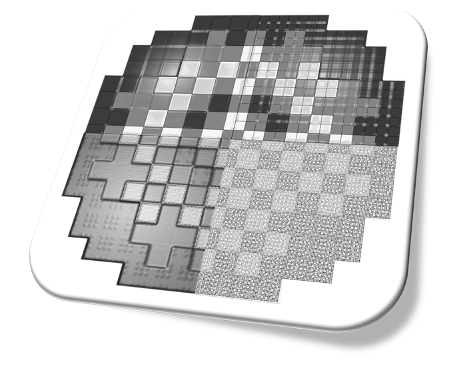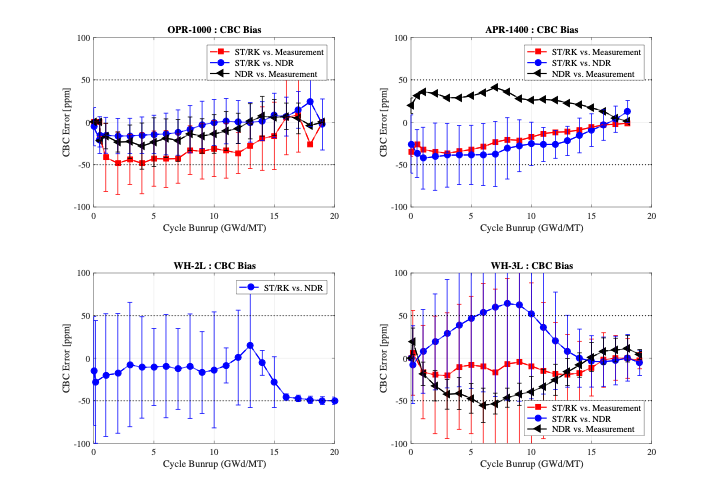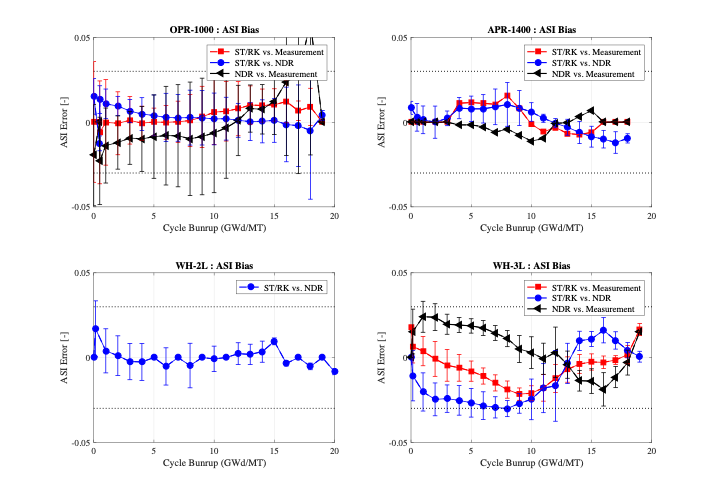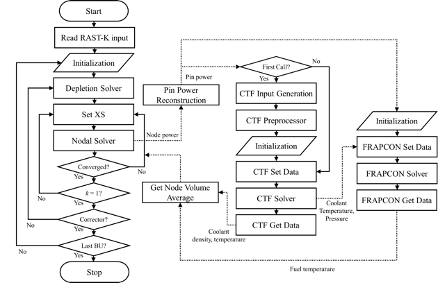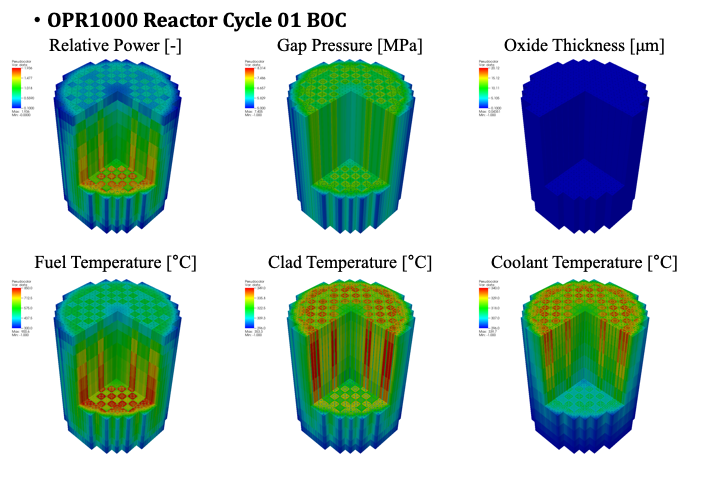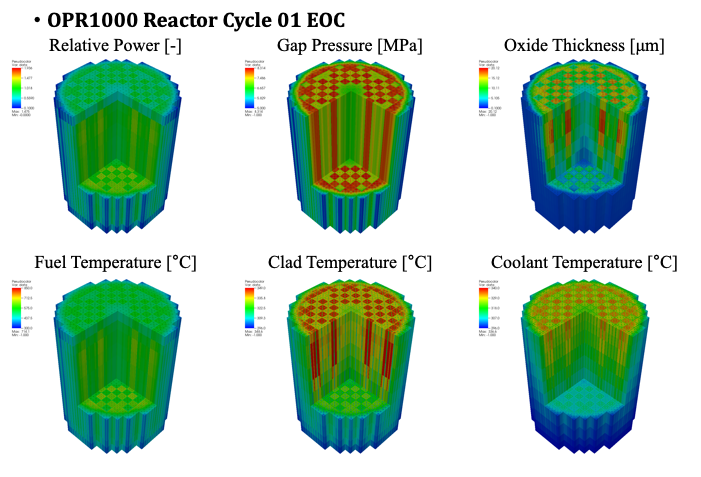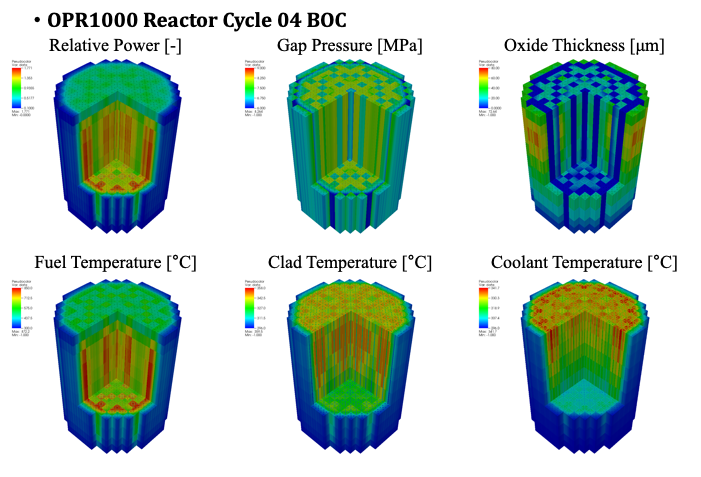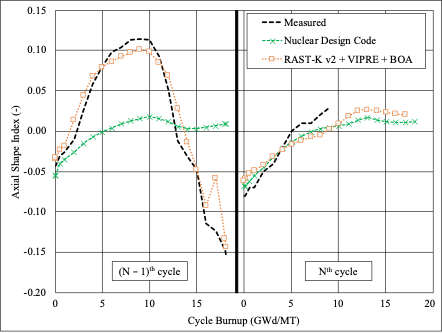Download Intro_RAST-K_2.0
RAST-K v2
The Recommended Publication for Citing
- Jinsu Park, Jaerim Jang, Hanjoo Kim, Jiwon Choe, Dongmin Yun, Peng Zhang, Alexey Cherezov, Deokjung Lee*, “RAST-K v2- Three Dimensional Nodal Diffusion Code for Pressurized Water Reactor Core Analysis”, Energies, 13: 6324, https://doi.org/10.3390/en13236324(2020)
- Jiwon Choe, Sooyoung Choi, Peng Zhang, Jinsu Park, Wonkyeong Kim, Ho Cheol Shin, Hwan Soo Lee, Ji-Eun Jung, Deokjung Lee*, “Verification and validation of STREAM/RAST-K for PWR analysis,” Nuclear Engineering and Technology, ISSN 1738-5733, https://doi.org/10.1016/j.net.2018.10.004 (2018)
- Farrokh Khoshahval, Minyong Park, Ho Cheol Shin, and Deokjung Lee*, “Vanadium, Rhodium, Silver and Cobalt Self-Powered Neutron Detector Calculations by RAST-K v2.0,” Annals of Nuclear Energy, 111: 644-659. https://doi.org/10.1016/j.anucene.2017.09.048 (2018)
Introduction
The RAST-K v2, a novel nodal diffusion code, was developed at the Ulsan National Institute of Science and Technology (UNIST) for designing the cores of pressurized water reactors (PWR) and performing analyses with high accuracy and computational performance by adopting state-of-the-art calculation models and various engineering features. It is a three-dimensional multi-group nodal diffusion code developed for the steady and transient states using microscopic cross-sections generated by the STREAM code for 37 isotopes. A depletion chain containing 22 actinides and 15 fission products and burnable absorbers was solved using the Chebyshev rational approximation method. A simplified one-dimensional single-channel thermal-hydraulic calculation was performed with various values for the thermal conductivity. Advanced features such as burnup adaptation and CRUD modeling capabilities are implemented for the multi-cycle analysis of commercial reactor power plants. The performance of RAST-K v2 has been validated with the measured data of PWRs operating in Korea. Furthermore, RAST-K v2 has been coupled with a sub-channel code (CTF), fuel performance code (FRAPCON), and water chemistry code for multiphysics analyses.
Physics Model
Neutronics
– Assembly-wise Unified Nodal Method (UNM)
– CMFD acceleration
– Wielandt shift
XS model
– Two-group group constants from STREAM2D
– Full / Hot case matrices
– Save micro XS for micro depletion
– XS functionalization with 3D/2D Lagrange interpolation
TH feedback
– Single phase formulation (no boiling) without momentum equation (constant pressure)
– Equivalent pin model
– 1D radial heat conduction
– Consider TCD with FRAPCON-4.0 correlation
– CTF Steam table (IAPWS industrial formulation 2008)
Fuel cycle analysis
– Micro-depletion for 22 actinides and 12 fission products
– Effective Gd approach
– CRAM depletion solver
Engineering Features
– Multi-cycle calculation (shuffling, rotation)
– Jump-in approach
– Pin power reconstruction
– Branch calculation
– Restart folding/unfolding
– DNB calculation
– Critical search
– Cycle length search
– B-10 depletion
– Overhaul period
– Mass flow rate search
– Print design parameter (mini-RSAC) for nuclear design
– In-core/Ex-core detector signal calculation
– FRAPCON/FRAPTRAN/VIPRE/CUPID input generation
– Source term calculation and decay heat analysis
– Simple CRUD modeling
– Burnup adaptation
Verification and Validation
RAST-K v2 has been verified and validated using the operation history of Korean PWRs. A total of 114 cycles of 13 reactor cores, including the OPR-1000, APR-1400, Westinghouse 2-loop reactor (WH-2L), and Westinghouse 3-loop reactor (WH-3L) were employed for the core follow calculation. The core depletion calculation results are compared with the results obtained from commercial nuclear design code and measurement data for the verification and validation of the steady-state depletion capability of the RAST-K v2.
Multi-Physics Coupling
High-fidelity multi-physics system
RAST-K v2 is coupled with CTF and FRAPCON to perform high-fidelity core depletion calculations. As CTF is a TH subchannel analysis code, its channel-centered model is changed to the pin-centered model to ensure consistency during coupling. The pin power information from the RAST-K v2 pin power reconstruction function is transferred to CTF and FRAPCON as input variables. The CTF solutions, such as the coolant temperature and pressure, are transferred to FRAPCON as a boundary condition for solving the heat conduction equation. Next, the coolant temperature from CTF and fuel temperature from FRAPCON are merged into node-wise information from pin-wise information and transferred to RAST-K v2 for cross-section feedback. For the multi-cycle calculation, the restart capability of FRAPCON is implemented by developing an interface program called FRAPI.
AOA analysis
To track the effect of CRUD deposition during core depletion, RAST-K v2 is coupled with the subchannel TH code VIPRE and water chemistry code BOA. The input file of VIPRE is automatically generated based on the node power distribution, which is calculated from RAST-K v2. After simulating VIPRE and BOA, the output file of BOA, which includes the CRUD thickness and boron mass in the CRUD, is read by RAST-K v2. The boron mass in the CRUD is used for the cross-section feedback, and the CRUD thickness is used to correct the increment in the fuel temperature. Owing to the absence of the source codes of VIPRE and BOA, the coupling is performed by handling the input and output files. It is possible to track the ASI by employing BOA during the AOA. Hence, the Nth cycle depletion can be initiated by predicting the depletion history of the fuel in the (N − 1)th cycle.


